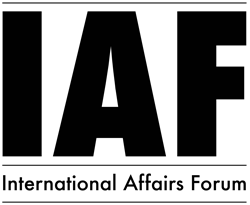| Sun. June 15, 2025 |
 |
|
||
|
||||
| ||||

Introduction
Whenever we talk about India and Pakistan there are few words that come in our minds like Enemies, War, nuclear weapons, Radcliffe Line, Kashmir etc. [[1]] India and Pakistan lie in the region of South Asia and are mostly responsible for the stability as well as instability of the region. There are only 8 Countries who possess the nuclear weapons in their arsenal, India and Pakistan are the part of that list. In this paper I will talk about the nuclear weapons of India and Pakistan as well as their motives, nuclear necessity, and their objectives. I will illuminate on an essential part of Indian and Pakistan’s nuclear policies; the nuclear deterrence between the two countries. Apart from that I will try to highlight the changes in the behavior of people from both countries in last decade.
Nuclear Deterrence and India-Pakistan
Nuclear deterrence is a very important doctrine that gained support after the Second world war. The destruction that was brought out by the nuclear bombs dropped by USA on Hiroshima and Nagasaki shook the world. Every state realized the destructive power of nuclear weapons and how it can destroy the whole world in few minutes. The basic principle of this logic is: One actor prevents another from taking some action by raising the latter’s fear of the consequences that will ensue. In simple language, if country A launches a nuclear war against country B, country B will be able to inflict enough damage on Country A that it would lead to what theorists’ call “mutually assured destruction”. Thus, in a nuclear war both sides will be so badly harmed that it will be impossible to declare one side or the other side as the winner. So, there is no winner, but everyone involved will be losers.
In the case of India and Pakistan, nuclear weapon competition between them is clearly visible. Often there are threats posed by the respective officials and ministers of both countries to oner another. However, both countries follow the policy of “no first use” [[2]]. There is a sort of instability that emerged between these two nations in last two decades. Many think tanks are worried that those instabilities can result in imprudent or mistaken use of nuclear weapons, over 22 years after they overtly tested them. According to the report by International Institute for strategic studies (IISS), “There are grave deficiencies and asymmetries in India’s and Pakistan’s nuclear doctrines, which are compound by mutual disbelief, existing and emerging military capabilities, and the prolonged absence of related dialogue mechanisms” [[3]].
Indo-Pak: nuclear weapons at Crossroads
According to the Stockholm International Peace Research Institute (SIPRI) yearbook, India possessed an estimated 156 Nuclear warheads and Pakistan had 165 warheads at start of 2021. India built its first research reactor in 1956 and its first plutonium reprocessing plant by 1964. The country first tested a nuclear device in 1974 (code-named "Smiling Buddha"). India then performed further nuclear tests in 1998, code-named "Operation Shakti". Having tested weaponized nuclear warheads in the Pokhran-II series (Operation Shakti), India became the sixth country to join the nuclear club.
Pakistan began development of nuclear weapons in January 1972. In December 1972, Abdus Salam led the establishment of Theoretical Physics Group. There wasn’t much progress in the initial time so Abdul Qadeer Khan was brought from Europe by PM Bhutto at the end of 1974. Finally, on 28 May 1998, a few weeks after India's second nuclear test (Operation Shakti), Pakistan detonated five nuclear devices in the Ras Koh Hills in the Chagai district of Baluchistan.
Looking into the timeline of adopting nuclear bomb capabilities by north countries we can easily conclude the competition between them. Both India and Pakistan were eager to develop the nuclear deterrence in order to threat one another on public platforms. Because we can’t ignore that these two had already fought five full-fledged wars in 20th century [[4]]. Whenever I am talking ‘nuclear weapons at crossroads’ my finger are always directed towards India-Pakistan. Because there are certain factors that make them interesting excluding the other nuclear capable nations.
1. The history of these two nations, it plays an important role in creating the rift between the two countries, which is even more dangerous when both of them are capable of nuclear war
2. Their location: they are neighbors that share a border which extends up to 3323 KM.
3. The growing intolerance among the governments of both states which are deuterating the circumstances and can result in the worst.
4. The region of Kashmir, which both nations claim. This has been the reason for many escalations between the two countries and has broadened the political gap between India and Pakistan.
So, we can now easily understand the importance of nuclear deterrence when it comes to India and Pakistan. However I am still firm in my point regarding the “nuclear weapons at crossroads” because of the fact that both India and Pakistan are constantly seeking new technologies and capabilities for their weapons arsenal. We can’t forget 2019 India-Pakistan border skirmishes in Feb 2021[[5]]. That was a very tensed time. The retaliations between India-Pakistan made many believe that war was going to break out and that both countries would use their nuclear warheads. The international community, understanding the intensity of the situation, put a lot of pressure on the two countries to deescalate the situation. Events like these have made citizens and people around the world worried that war can break out anytime between India and Pakistan, but as of right now their nuclear weapons have only meet at a crossroads in their words and governmental practices towards each other.
While it has prevented the nuclear all-out war between India-Pakistan, but it has failed to prevent the military engagement between the two nations. Nuclear Deterrence has played its part and is still playing its part between India-Pakistan. There is still a lot of relevance in nuclear deterrence even in post-Cold War era. The living example can be seen in the many confrontations that have played out on the India-Pakistan border such as the Kargil war of 1999.
Conclusion
It is simple to conclude that India and Pakistan can’t be ignored particularly when it comes to their nuclear weapons. They are like two small children who can fight whenever they want and no one can stop them. Indian and Pakistan build their nuclear weapons out of insecurity towards one another; they are more interested in what each other is doing and not as focused on what other nations are doing to them. Thereby giving too much of their time towards one another instead of focusing on other concerns in the international political sphere. This has led to the intense and intolerable conditions in the region. South Asia is on the verge of instability thanks to the growing tensions between India-Pakistan which worsened in the last decade.
While there are growing tensions nuclear deterrence has played its part, having managed to keep both of these nations on their shores and prevented any all-out nuclear war between them. Though we can’t ignore that how the arms race between India-Pakistan has severely affected the regional security in South Asia. Security dilemma has grown in the region so has the balance of power. All this is happening due to both Indian and Pakistan using nuclear weapons as a deterrence of power; a similar pattern which was seen during the Cold War. All we can do is hope that both of these nations come forward and talk with each other in order to ensure the safety of their people.
[1] The Radcliffe line was the boundary demarcation line between the Indian and Pakistani portion of Punjab and Bengal provinces of British India. Today its western side still serves as the Indo-Pakistan border and the eastern side serves as the Indo-Bangladesh border. It was named after Sir Cyril Radcliffe.
[2] No first use (NFU) refers to a pledge or a policy by a nuclear power not to use nuclear weapons as a means of warfare unless first attacked by an adversary using nuclear weapons.
[3] “Nuclear Deterrence and Stability in South Asia: Perceptions and Realities”, Research paper, International Institute of Strategic studies (IISS), 20 May 2021.
[4] India and Pakistan have fought 5 full-fledged wars viz First Kashmir war (1947-1948), Second Kashmir War (1965), Indo-Pakistan war of 1971, Siachen Conflict (1984-2003), Kargil War (1999).
[5] The 2019 India-Pakistan border skirmishes were a series of armed clashes consisting of cross-border airstrikes and exchanges of gunfire between India and Pakistan across the de facto border in the disputed Kashmir region.
| Comments in Chronological order (0 total comments) | |
| Report Abuse |
| Contact Us | About Us | Donate | Terms & Conditions |
|
All Rights Reserved. Copyright 2002 - 2025